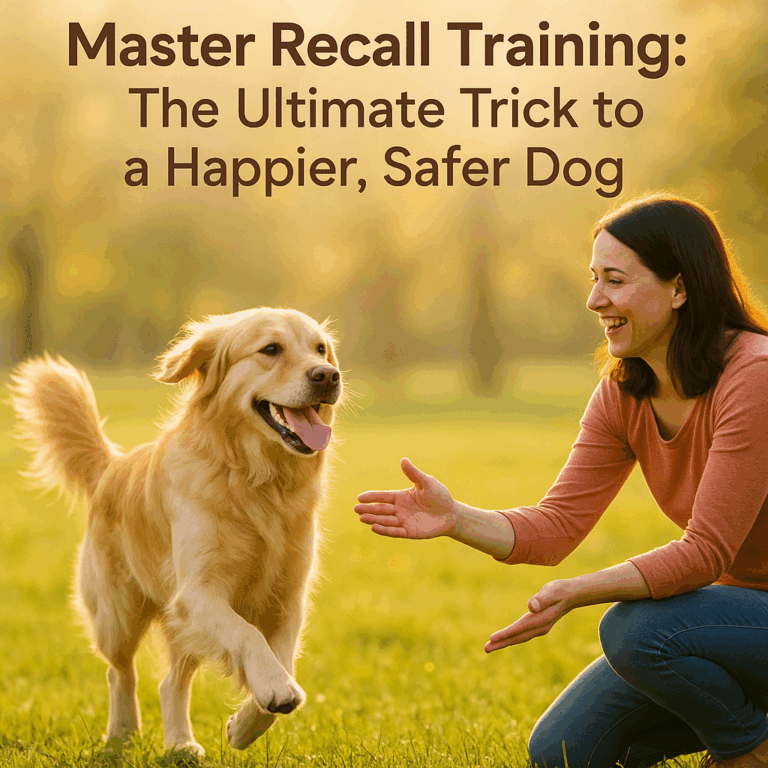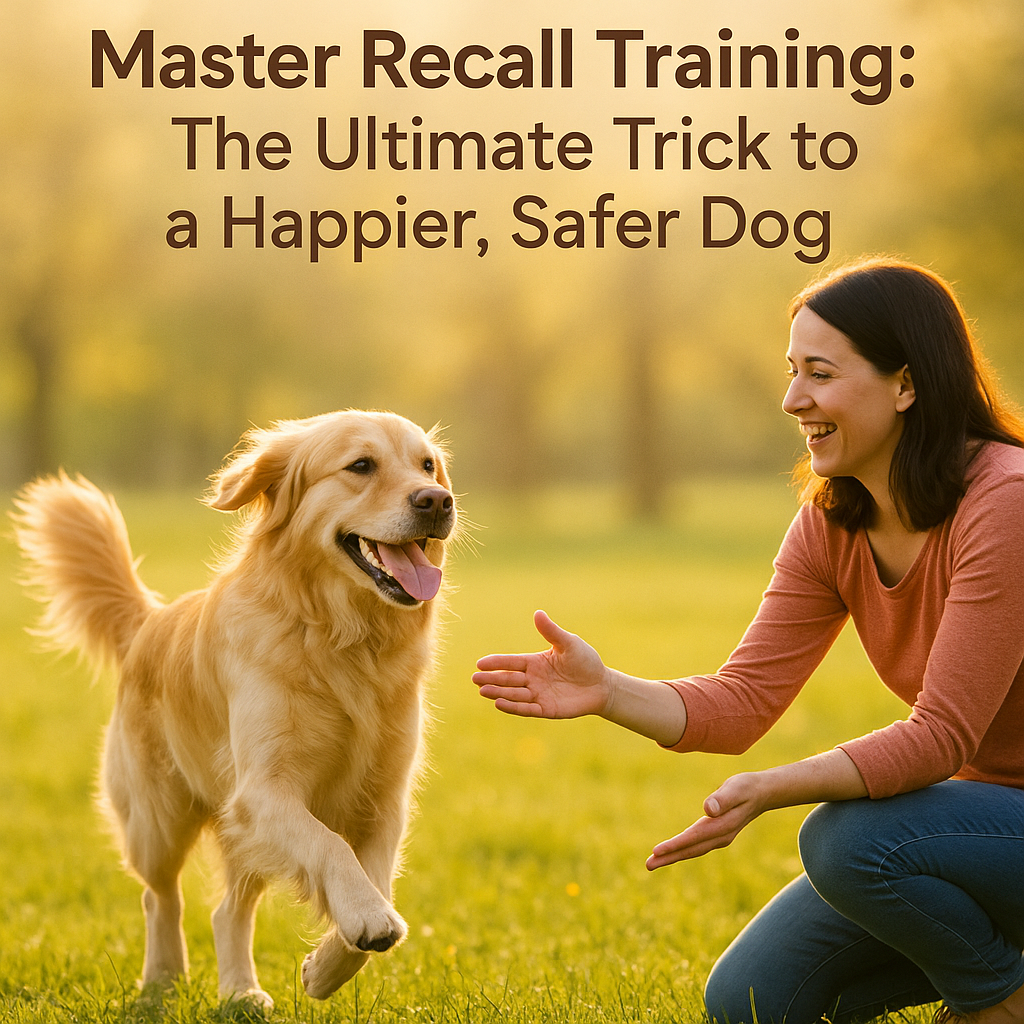The Secret Sauce for Recall Training That Actually Works
If you’ve ever called your dog at the park and gotten nothing but a leisurely glance before he wandered off sniffing something far more interesting, you’re not alone. Recall training—the skill that makes your dog come running back when called—is the golden ticket to freedom and safety for both you and your pup. Whether you’ve just brought home a playful puppy or you’re working with a seasoned dog, mastering recall transforms every walk, hike, and backyard romp into a joyful adventure instead of a stressful game of chase.
Why Recall Matters More Than You Think
Imagine your dog slips his dog collar during a walk—maybe the buckle didn’t hold, or the tag flopped off somewhere. Suddenly, that cute curious pup is off on an unsupervised adventure. An effective recall can prevent a potentially scary situation from turning into a nightmare. With a solid recall, you can trust your dog to respond when called, ensuring their safety and your peace of mind.
Plus, it’s the cornerstone of responsible pet care. No more yelling or panic, just a happy reunion when your dog comes bounding back. Like one wise trainer once said, “Recall is the leash you don’t see.” It keeps your dog connected to you, no matter the exhilaration of open spaces or the temptations of squirrels.
Starting with the Basics: Set Your Puppy Up for Success
Begin when your dog is still a puppy, and you have a high advantage. Puppies are eager learners and usually adore any attention you give them. Keep early sessions short—think 5 minutes max—to retain their focus. Use a cheerful, inviting tone when calling their name or “come.” Your goal? Make every recall feel like the best thing that ever happened.
Start indoors or in a small, enclosed space where distractions are minimal. Hold an irresistible treat or their favorite toy, kneel down to their level, and cheerfully call, “Come!” When your puppy eyes light up and they take a step, celebrate wildly. The blurry puppy zooms closer? Shower them with praise and reward—think juicy tidbits of chicken, cheese, tiny training cookies, or enthusiastic belly rubs.
Attach a lightweight dog collar with an ID tag early on. It ensures that if your puppy gets loose, they have a way home. Plus, the collar acts as a gentle reminder during training. Using a collar with a soft climb-in feel also helps puppies get used to wearing something without fuss.

Take It Outside: Gradual Exposure to Distractions
Once your dog confidently responds indoors, move to a quiet backyard or fenced area. Remember, the recall skill isn’t “one and done”—it develops through repeated, positive experiences. Introduce mild distractions like toys nearby or a family member walking at a distance. Every time your dog responds to your call despite these distractions, the bond between your command and their action strengthens.
Avoid the trap of calling your dog only to snap on the leash afterward. Your pup might learn to ignore “come” because it predicts the end of freedom. Instead, let “come” always lead to something wonderful—playtime, treats, or a fun run. This positive association makes them eager, not reluctant.
Keep your dog collar and ID tag snug but comfortable. Many dogs wiggle away from fancy collars or darling charms, so pick durable tags with clear, engraved information—no fading or scratching! A reliable ID tag paired with solid recall skills is insurance that your dog can find their way home even if something unexpected happens.
The Magic of a Long Line
When you’re ready to level up outside the fence, a long training lead (think 15–30 feet) becomes your best friend. It lets your dog explore while keeping them safe. Call your dog enthusiastically and gently tug the leash if needed, so they understand “come” means turning around and heading to you. Always reward generously when they complete the recall.
In this phase, patience is golden. Some dogs may take a moment to process, sniff the air, or escape a sudden distraction, but consistent practice will build muscle memory. Repeat these sessions often and keep the pacing upbeat.
Advanced Tips: Make Yourself Irresistible
Want recall to feel like the best invitation ever? Blend your voice tone, body language, and surprises. Get down low, clap your hands, or do a silly dance. Use excited exclamations like “Yay! You came!” or “Good job, buddy!” Your dog loves connecting with your enthusiasm.
Mix treats and toys to maintain excitement—some dogs adore tug games once they arrive, while others live for rare treats reserved only for recall winners. Rotate rewards to keep them guessing and motivated.
Another game-changer? Practice recall during regular walks. Stop, say “come,” and if your dog turns, celebrate. This weaves recall into daily life rather than isolating it for “special” sessions.
When Recall Meets Real Life: Safety First
Every responsible dog lover knows the heart-stopping feeling when their dog slips free. A sturdy dog collar with an up-to-date ID tag is your first defense. But real security shines through top-notch recall skills. The combo ensures your dog comes running even near traffic, wildlife, or open water.
Remember, recall can always improve. Puppy or adult, high-energy or mellow—every dog benefits from refresher training. Safety isn’t a one-time accomplishment but an ongoing journey. And with positive training, it becomes a shared adventure full of fun, trust, and the unbreakable bond between you and your canine companion.
So next time you call your dog, imagine them dashing toward you like you’re their whole world because, truly, in those moments, you are. Happy training, friends!
Tags: dog obedience training, dog recall safety, dog recall training, dog training for recall, effective dog recall, improve dog recall, puppy recall tips, recall training techniques, recall training tips, teaching dogs to come